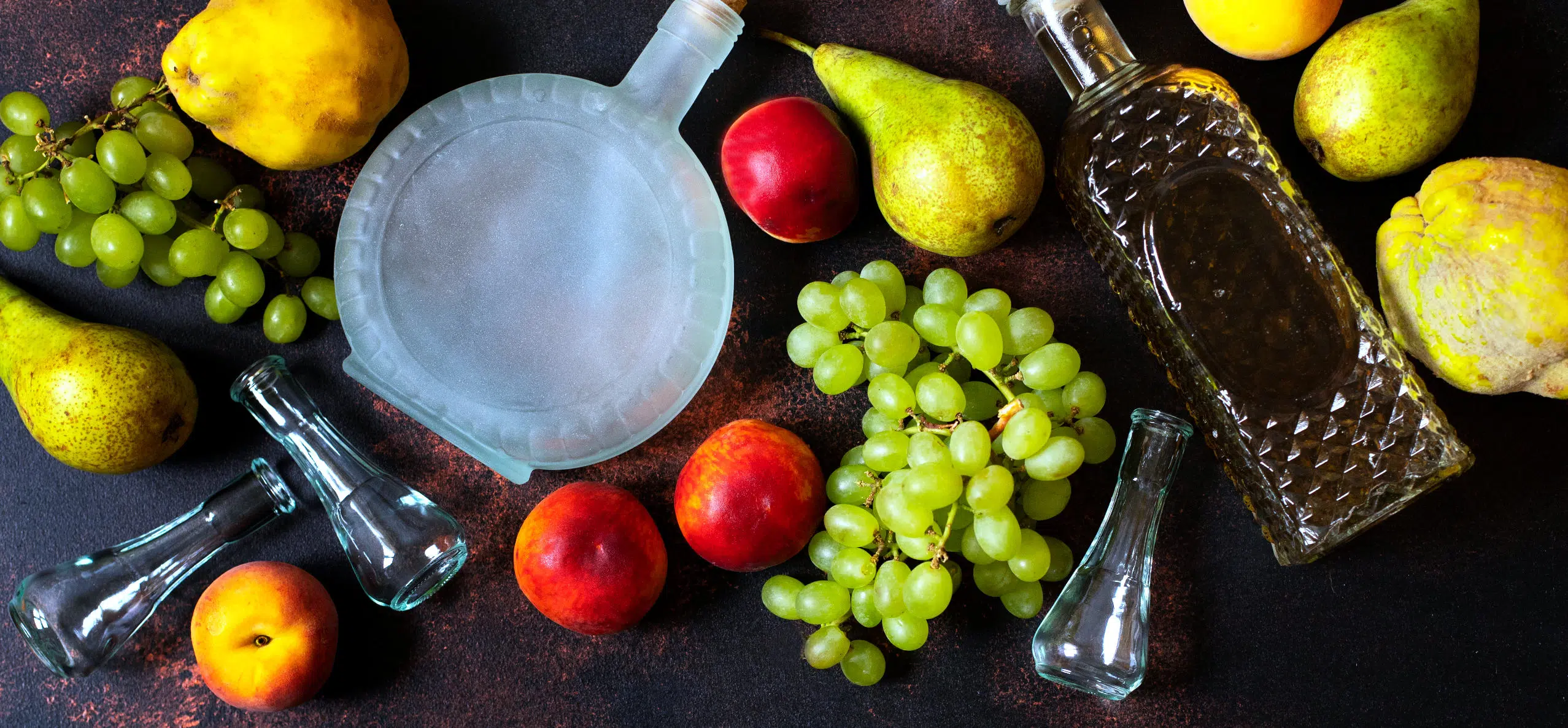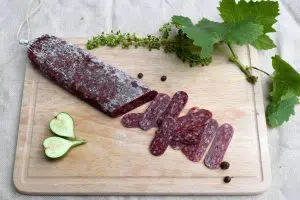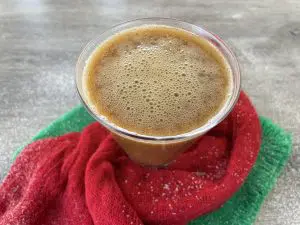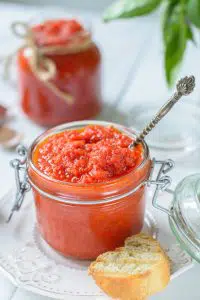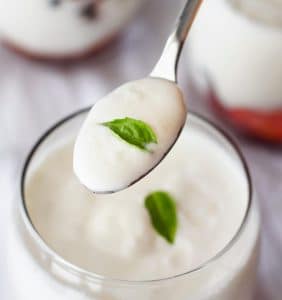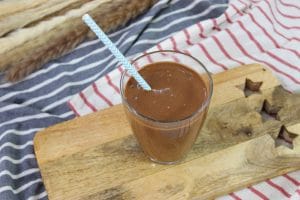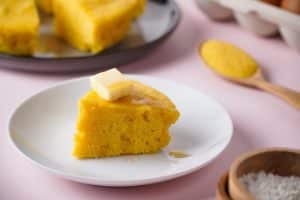All About Bulgarian Rakia
Important Note: When you buy through our links, we may earn a commission. As an Amazon Associate we earn from qualifying purchases. Content, pricing, offers and availability are subject to change at any time - more info.
Alcoholic drinks are standard in just about every country in the world today, with each nation have a unique take. For example, Bulgaria has rakia, a unique alcohol that is close to a brandy but also far too independent in its taste profile to be anything but itself. It’s also slowly becoming very popular in many parts of the world.
But just what is this drink? How is it made, what ingredients does it use, how do you serve it, what foods does it mix with well, and is it good for you? Let’s take a deep dive into these questions to get the answers you deserve. By the time you’re done reading, you can consider yourself an expert on Bulgarian rakia!
What is Bulgarian Rakia?
Bulgarian rakia is a type of Central and Southeast European liquor often categorized as brandy or wine. It doesn’t entirely use the same kind of brewing methods common to wine and is closer in conception to brandy. That said, it is also quite different from a standard brandy because it is denser, richer in flavor, and typically much heavier in alcoholic content: it produces the “Bulgarian Feeling.”
What is particularly interesting about this drink is that it is one of the oldest known European liquors globally. A still was found dating back to the 11th century in Bulgaria, the oldest known example of such a still. After 1382, rakia started to spread through other parts of the continent, after the infamous Siege of Sofia at that time. The Ottoman Empire attempted to take this city and failed.
This type of failure was not familiar to this nation. When asked why he had lost, the commander claimed that the “tough men” defending Sofia had all drank rakia before the fight. He claimed that this turned them “invincible” and made them impossible to defeat. This story has been repeated many times and is likely a folk tale. But it is a folk tale of the highest order and a significant reason for the success of this drink.
Interestingly, rakia is one of the most commonly home-stilled drinks in Bulgaria. People often have different flavors and recipes that they brew for personal use or sell to friends and family members. These private stills don’t have the kind of rigorous safety standards you find in a truly professional still. As a result, it is best to be a bit cautious of this homemade option. If you do find it, you’re going to want to add a little bit (or a lot) of water to the drink. Trust us on this one.
How is Bulgarian Rakia Made?
Rakia is unique because it can be distilled from just about any fruit. It typically comes from grapes, plums, and apricots in Bulgaria. However, some areas also add walnuts, honey, and herbs to add to the taste. Typically, it is distilled in a large still, familiar to a moonshine still. As mentioned, personal stills are used in many homes, and their essential action is close enough to major manufacturers to compare for taste.
Grape rakia is often broken down by the various methods used to ferment this drink. For example, some brewers may use fermented grape musts, which produce a different flavor than the juice from grape skins or the grape itself. White grapes are typically the most common, as they are the most aromatic and tasty. These include muscac, dimyat, misket, and sauvignon blanc grapes. This method produces a wine distilled in dzhibiri or copper stills.
Fruit rakia is more like brandy and less like wine and typically includes plums, peaches, pears, and apricots. They must be carefully washed, ground, fermented, distilled, and aged before mixing. This popular option is usually stored in wooden barrels of oak or cherry to produce more aromatic liquor. It is the type you’re more likely to see if you go to Bulgaria looking for high-quality rakia for your home.
Interestingly, Bulgaria places many vital elements of their culture in rakia. For example, death rituals often included bread and rakia for mourners and spilled rakia on the ground for the deceased. In a wedding, the groom’s father will take a glass of rakia to each guest in a show of togetherness and friendship. And to many Bulgarians, a drink of “rakia a day keeps the doctor away.” Is this true? Maybe.
What are the Health Benefits of Bulgarian Rakia?
It is not uncommon for many in Bulgaria to make wild claims about the health benefits of rakia. Not only do they believe that a drink a day keeps you healthy, but they also claim it can extend your lifespan. There is some slight potential truth to this idea. Rakia contains a high level of antioxidants, which may help fight against aging. However, a “glass a day” isn’t going to improve your body or mind magically.
Others will claim that 1-2 glasses of rakia will help with stress, heart attack risks, and strokes. These claims are questionable. Most people end up with more anxiety and depression when drinking alcohol, as its calming effects are temporary and do not fix a person’s root issues. And the heart-health benefits of rakia are dubious: claims that it prevents cholesterol in your cardiovascular system are pretty unlikely.
Instead, rakia should be treated like any rich wine or brandy and drank only in moderation. A glass a day may be too much because of its high alcohol content and potent effect on the body. In addition, the heavy alcoholic content is likely to damage your liver and kidneys and may cause other health problems that you could easily avoid. And the alleged benefits are all scientifically proven with different types of drinks and foods, making rakia a less than ideal way of getting them.
How Does Bulgarian Rakia Taste?
Bulgarian rakia compares very favorably to a Japanese sake or an Italian grappa. It has that same intensity of flavor that you’d expect from those drinks, combined with a similar level of undercurrents. However, the exact taste will naturally vary depending on what kind of rakia you purchase. As each manufacturer uses slightly different ingredients, the results can be staggeringly varied.
Usually, you end up with an aftertaste (or primary taste) very similar to the primary brewing fruit. For example, pear rakia has a very mild and rich flavor that matches the fruit. Quince rakia, by contrast, has a very distinctive fruity scent and flavor that is not like any other wine we’ve ever tried. We also find that an apricot rakia is an excellent option for the brave wine drinker.
Grape rakia flavor typically varies based on the area in which you purchase it. Most Bulgarian grapes have a pretty consistent taste. However, you may find some areas have sharper flavors or more acidic aftertastes. A little experimentation is necessary here to get the best results. Try out a few rakia brews from all over the Bulgarian countryside to get an insight into which works best for you.
Don’t forget: rakia has a very intense aftertaste that may be quite bitter to many people. Often, a piece of bread or cheese goes well with rakia. The cheese you pick will naturally vary based on your preference and the rakia you purchase. Feta is not an uncommon pairing option with many rakia blends. However, cheddar and gouda also make a good option, depending on your overall preference.
Who Makes Bulgarian Rakia?
Rakia is typically made, as you’d expect, primarily in Bulgaria. The national drink provides a rich array of flavors and tastes that make it more than interesting for most wine drinkers. The best rakia manufacturers worldwide are all center in Bulgaria and produce an excellent and tasty product indeed. Let’s take a look at some of the biggest brands to give you an idea of their quality:
- Troyanska Slivova – This rakia manufacturer uses a variety of fruits to produce drinks. Their most common drink is the Troyan Rakia, a 1989 brew made from plums aged in oak barrels. This product was produce only in limited qualities and is often one of the most expensive options on the market. Expect an alcohol content of around 43% or so with this unique blend.
- Misketova Kulturna – Drinkers who enjoy grape wines may enjoy this brand’s special reserve, otherwise known as Izba Karabunar. Made with at least six-year-old local grapes in oak barrels, it is produced regularly but in limited amounts. Expect an alcoholic content of at least 40% for each drink. That amount should give you more than enough kick to enjoy this rakia.
- Yubileina Rakia – The prized drink of this manufacturer (Otlezhala za Verni priyatel or Leopard Trading) utilizes high-quality grapes in special hand-made bottles directly from Armenia. Launched to celebrate Trading’s 25th anniversary, this drink is one of the best produced by the manufacturer. Like with the previous drink, expect around 40% alcohol content in every bottle.
These manufacturers are just a few of the options from which you can choose here. Make sure to research each option before you make a purchase carefully. Just as importantly, you need to make sure that you’re prepared for the unique intensity of Bulgarian rakia. As mentioned before, its taste is not for the weak and is something only more distinguished wine drinkers may appreciate.
How Should I Store Bulgarian Rakia?
If you are smart about storing your Bulgarian rakia, it can stay drinkable for a long time. Most suggest a 3-5 day drinking window after you open a bottle of this wine. However, you can often indefinitely store rakia and age it for better tastes. Keeping the storage area at the right temperature, light level, and humidity will help minimize any potential complications.
Generally, Bulgarian Rakia needs to avoid excessively warm or cold temperatures to get the best storage results. You can use a standard wine temperature guide here. Generally, you want a temperature between 55-68 degrees Fahrenheit (or 13-20 degrees Celsius) or so. Any lower will cause potential quality issues. Fluctuations are also problematic, as they can cause the cork to expand and contrast.
Like with other types of wine, you should store your Bulgarian rakia horizontally in a wine rack. The cork should always be replaced after drinking and should be kept moist at all times. That’s one reason why you store wine horizontally: it pushes a bit of the fluid up against the bottom of the cork. A wet cork stays expanded and prevents seepage and premature aging issues with your rakia.
Place your rakia in a cellar with as much dark as possible. UV rays can damage your rakia over the long term. Also, try to keep your rakia away from vibrations, as this may shake it up and cause trouble. Finally, things like washing machines, dryers, and other machines should be kept away from your rakia storage area. Otherwise, it will get bad faster than you might think.
As for humidity, you need to keep it at between 60-68 percent relative humidity. Higher levels can water down the wine, while lower levels can cause the cork to dry out. Depending on your storage area, please put it in a humidifier or a dehumidifier and check it regularly. If you find a spot that naturally keeps that humidity, then you don’t need to buy anything extra, thankfully.
When all else fails, buy a wine fridge to produce the proper levels of humidity and temperature. These fridges are reasonably affordable and can hold a large or small amount of wine. The ultimate use will vary based on your needs, naturally, so make sure you take the time to talk with the manufacturer about storage methods. However, most rakia should do fine in your standard wine fridge.
Are There Any Dangers of Drinking Bulgarian Rakia?
As with any alcohol, you should avoid over-drinking Bulgarian rakia. Unfortunately, Bulgaria has the highest per-capita alcohol consumption rate in the world. Part of that fact is due to the intensity of their national drink. Rakia is not for a first-time drinker and should be carefully controlled. Try to avoid drinking more than a few glasses in one sitting, or you may find yourself suffering from harmful after-effects.
For example, a rakia hangover is quite intense and may leave you in a pretty rough shape for a day or two after drinking. Even worse, rakia alcohol poisoning is not uncommon due to its unique intensity. This problem is not unusual among Bulgaria citizens, particularly those who get addicted to the extraordinary array of flavors and textures familiar with the best Bulgarian rakia blends.
As for allergic risks, these are pretty minimal. Most of the ingredients used in rakia don’t have a high risk of allergic reaction. That said, you may want to research which items are present in your rakia before buying any. Otherwise, you might end up experiencing a potent and, unfortunately, dangerous reaction. Talk to your doctor to get an allergy test if you’re worried about this potential risk.
How Should I Serve Bulgarian Rakia?
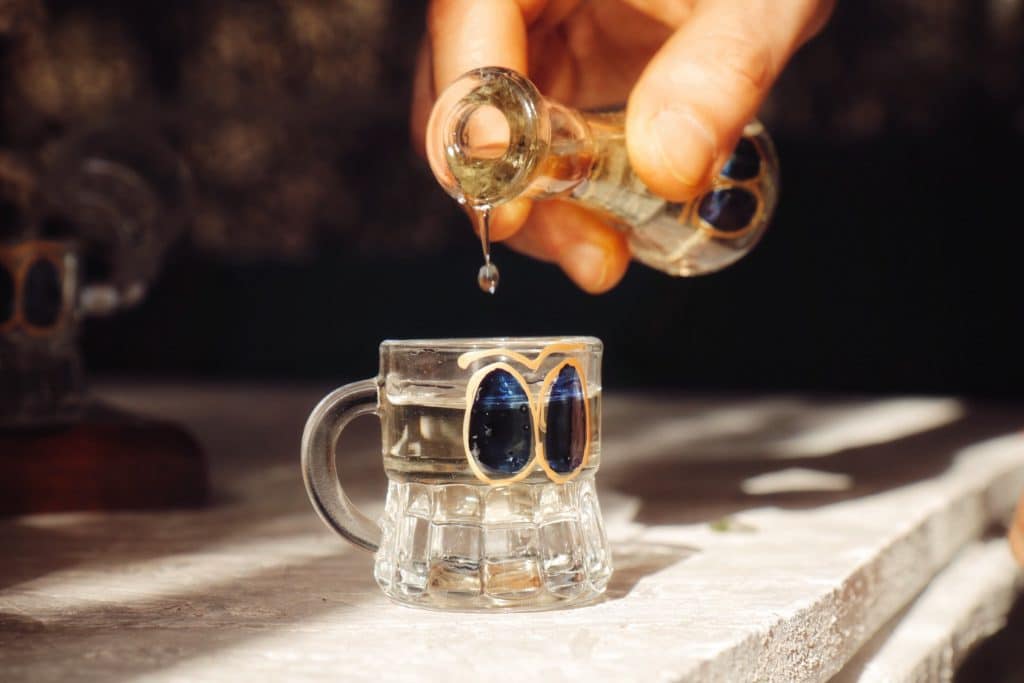
When serving Bulgarian rakia, there are a few simple things to keep in mind. First, rakia is considered an aperitif instead of a digestif. What do these terms mean? An aperitif is an appetizer wine, one that you serve before a meal. Digestif types are used as a digestive aid and are typically drank during meals or after. Make that you keep that fact in mind before you serve Bulgarian rakia to anybody in your home.
Should rakia be chilled or left at room temperature? That typically varies according to the weather. Rakia must be chilled in the summer to provide it with a fantastic taste. However, it is generally warmed with honey and black pepper during the winter to give it more of a kick. Warm it up on a stove and add just pinches of these extra ingredients to make it a more appealing option.
Do you need to mix it with anything? As with most wines, it is best to drink Bulgarian rakia without any mixers. Some people who drink homemade rakia typically add a little water to cut back on the intensity. Homemade rakia is often very intense and, without water, can be very debilitating very quickly. Even manufactured types may benefit from just a little touch of water to lighten their taste.
As for food, Bulgarian rakia pairs best with fresh or even pickled vegetables. This combination provides a fresh and exciting variety of textures that are hard to get otherwise. You may also find it mixes well with various types of salads, particularly the Bulgarian favorite of fresh Shopska Salad.
For most first-time rakia drinkers, a single glass should be more than enough to get a feel for this drink. The intensity of Bulgarian rakia, even with water, is such that it’s best to ease your way into consumption. But, again, a single drink is usually more than enough to give you an idea of its intensity. Only progress to a second glass if you feel comfortable with its potent aftertaste and alcoholic effects.
Where Can I Buy Bulgarian Rakia?
Specialty liquor stores online provide the easiest way to find Bulgarian rakia. Some people may find that these stores have varying levels of quality and consistency, though most are usually well worth your consideration. Just a few stores to consider include:
- Bulgaria Shop – This European Union shop will provide you with reasonably priced Bulgarian rakia carefully brewed and sold by the top manufacturers in the field. Search through different options and find those that feel right for you. We strongly suggest the grape!
- Find BG Food – If you want Bulgarian foods of any type, this shop is a great place to start. They provide a variety of different high-quality products, including various meats, vegetables, meals, and drinks. In addition, their rakia is typically carefully selected from the best manufacturers available.
- Bulgarian Wine – This specialty shop focuses specifically on Bulgarian wine, including many varieties of rakia. They work with many distilleries and manufacturers and strive to provide the highest-quality options for your needs, cutting back on confusion and other issues with ease.
- Bulgaridistillery – Do you want high-quality Bulgarian rakia straight from its country of origin? Then, this distillery is a good choice for you! They brew a wide variety of different rakia options, focusing on the highest-quality ingredients at reasonable prices. You can’t go wrong with their brews.
These are just a few of the many options available online. In addition, you may also find high-quality brick-and-mortar liquor shops that sell wine. Typically, this option is suitable only for shops that focus on high-grade Bulgarian rakia, as some may get the cheapest options to save themselves money.
Try Out Some Bulgarian Rakia
Are you interested in trying out Bulgarian rakia? You might find that it fits well into your personal taste and mixes well with many meals. Try out out any of the online shops mentioned above to get easy access to this drink. If you cannot afford to buy from them or are not eligible for shipping to your area, you can also check out specialty liquor shops near you to see what they have to offer.
Bulgarian rakia is gaining popularity in many areas and may be a good choice for those who want a slightly different wine taste. First, try to mix and match it with some of your favorite cheeses to see what results make sense for you! Then, you can try to integrate other unique uses for your Bulgarian rakia, such as replacing your New Year’s champagne with a glass of this fascinating drink.
